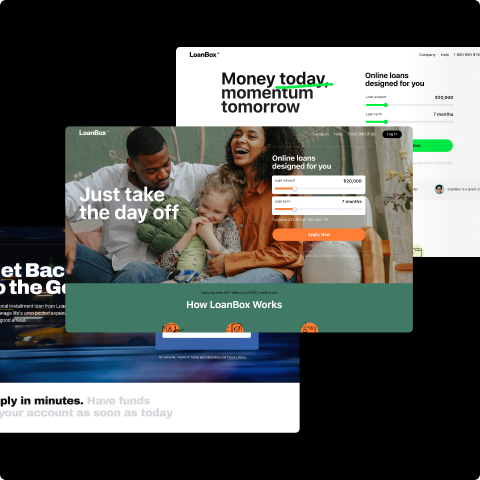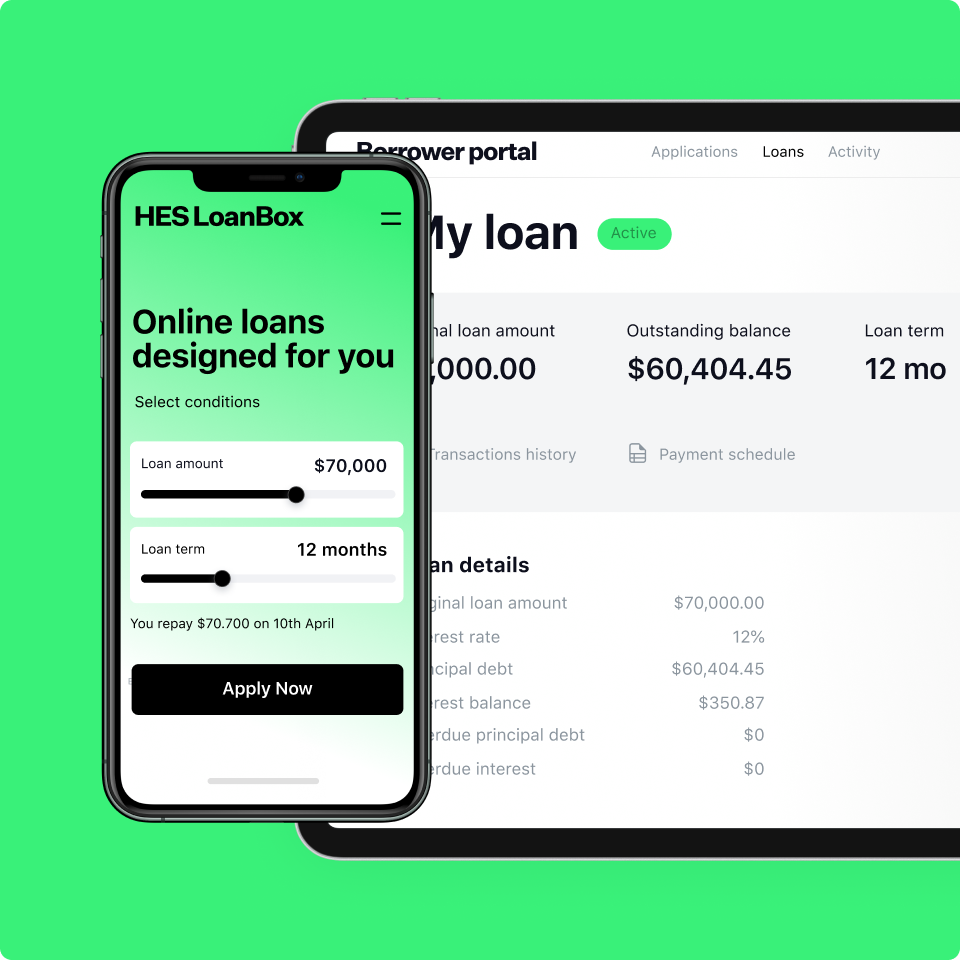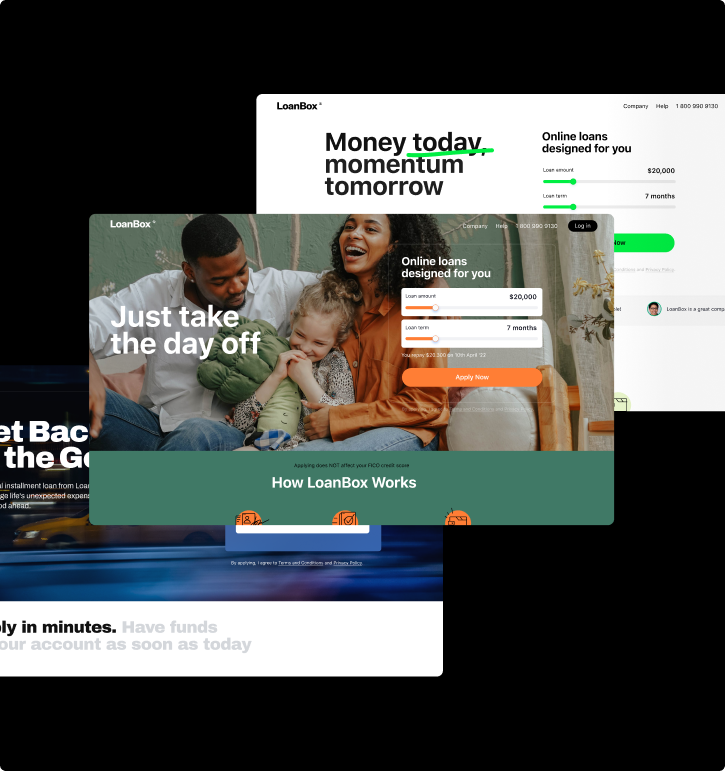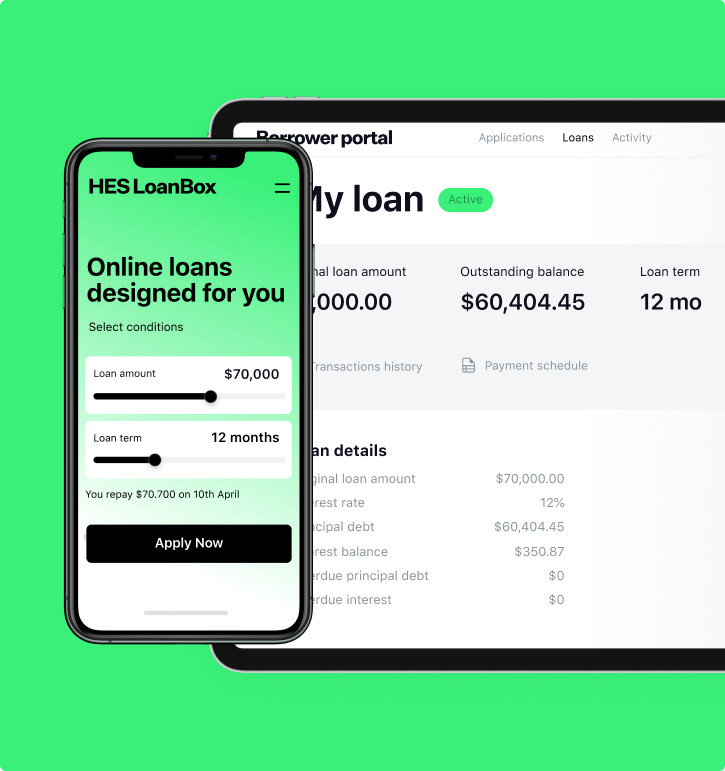Peer-to-peer, microfinance, leasing, commercial, or anything in between, when your business deals with lending, choosing the right software solutions is one of the biggest decisions you’ll ever make. But which is best for you?
Chances are some of your business processes can be handled well by out-of-the-box technology. At the same time, other processes require a custom approach to deliver value to your business. Below you’ll learn the benefits of both approaches to business technology to enable you to make an informed decision.
Terminology Unwrapped
Before we dive into the pros and cons of each approach, let’s unpack what these terms actually mean. Where does the border of out-of-box stop and custom begin? Here are our quick definitions.
Out-of-the-box solutions. The OOTB meaning is software that is ready-made and ready to go. Also known as off-the-shelf software, it works almost immediately after being installed and can generally handle the specific business process it was designed for.
Loan Management Software Features to Invest in at the MVP Stage Custom software. Custom lending software solutions are a unique piece of technology, usually created specifically for your company with a distinct goal in mind. Perhaps you need to solve one particular issue within your business, let’s take client onboard as an example, but out-the-box doesn’t cut it. That’s where custom software comes in. It enables you to adapt a solution to your needs.
Which side are you on: Custom vs OOTB?
Benefits and Downsides of Out-of-the-Box
Out-of-the-box is best for:
For when you need a solution to a straightforward problem, and you need it fast.
Managing your budget. At least short term, OOTB software often comes with a fixed-price model, so whether you pay outright for the software or monthly/yearly via a subscription model, you’ll know exactly what you’re paying for and when.
Deployment speed. Essentially, out-of-the-box software is ready to go directly, well, out of the box. This means you can deploy your solution fast to solve the particular business issue you’re using it for. Not counting staff training time, of course.
Availability. And that’s another thing, OOTB is there when you need it. Often, it’s as simple as signing up, installing the technology, and you’re ready to go.
Support and FAQs. Because you’re not the only one using the software, when issues occur (and they will whether you go custom or OOTB), it’s likely someone has already experienced them before. The solution is already in place or in progress.
Not reinventing the wheel. Some functions don’t require a complex solution. After all, you’re not going to custom-design a new email platform when there’s Gmail, are you? OOTB is perfect for such straightforward issues.
Out-of-the-box is not great for:
Not all business processes can be solved with OOTB technology. Here’s more:
Your budget. Yes, previously, we said that it’s possible to manage your expenditure with OOTB, and that’s still true. But down the line, when your business grows, so too do these costs. That’s why it might make sense to invest in software sooner rather than later.
Migrating. While we’re on the topic of growth, this is one other issue with OOTB. As your business grows, your exact software needs might change as well. This will probably mean sooner or later. You will need to migrate your software, which could incur extra expenses or unexpected issues.
Customization. Some processes in business are straightforward. Others, not so much. If you suspect you need a unique feature or function from the beginning, out-of-box is not for you.
Control. Bugs happen in software, and they can be pretty common too. Many will not affect the overall functionality of your software and will be merely annoying. Others could take your software offline for hours, and this could be detrimental to your business. Unfortunately, with OOTB, this is outside your control and is usually solved by the company’s tech team, not yours.
How HES LoanBox Mitigates the Cons of Traditional OOTB
HES LoanBox is a ready-made platform designed by our team to provide lending automation for our customers. Unlike the majority of lending solutions, LoanBox is far more flexible and supports a variety of customization options. Let’s start in a row.
LoanBox consists of 3 main components:
- Digital onboarding with custom branded landing page
- Borrower portal space with a personal account for digital interactions
- Functional back office for loan management: from application to repayment
Meet HES LoanBox: Ready-to-Use Lending Platform The solution has everything that a user/company needs for lending such as, reporting, smart scoring and underwriting, notifications, application and document management, calculation engine, security, task management dashboards, and more. Besides, the platform supports dozens of integrations, including KYC, credit bureaus, SMS/email, 3rd party BI products, payment providers, etc.
If you need something special, our team is also ready to discuss and find the perfect fit solution for your business.
Psss… Wanna start lending within 45 days?
Benefits and Downsides of Custom Lending Software
Custom lending software is best for:
Custom software allows you to create or adapt a solution to suit your precise business needs.
Digital Lending in Europe: Trends, Insights, and Predictions of 2021-2025 Business growth. If your business is just starting off, it can be hard to foresee your software needs for the future. But it is essential that you do. Knowing your future potential helps predict current software needs. So, if you need room for growth — custom is for you.
Complex business challenges. Perhaps you have proprietary software behind your business or work with a unique business model. In this case, out-of-box isn’t going to cut it. You need a custom solution to slot directly into your company like a puzzle piece.
Long-term cost-effectiveness. Starting off with OOTB might seem like a smart solution to save money, but it’s not always the case. As your business grows, your needs do too. This leads to increases in subscription fees or changes to your software needs. Custom software can be expensive initially but often pays off in the long run.
Tailored to your team. Every company has nuances in their work. These are often areas that make them unique. Custom software allows you to adapt fully to your team’s needs, not rely on industry standards, which may differ from your strategy and processes.
Competitive edge. Just like your unique selling point, your software helps you do your work better than anyone else. It equips your team with capabilities that outshine your competitors. For example, a seamless loan calculation solution allows you to swiftly deliver a repayment schedule faster, ensuring your client knows what they’re paying and when—increasing customer satisfaction.
Custom lending software is not great for:
Fully tailorable and adapted precisely to your business sounds perfect, but is it always worth it? The truth is, no. Not all companies need to develop software from scratch. Here’s why.
A short time-to-market. Most of our customers mention this parameter as one of the most important. And we are ready to meet this requirement: keep reading to find out how.
It’s too costly. There’s no doubt that having a unique solution is an asset to a business, but sometimes it doesn’t make financial sense to do so right away. Before you invest in software, make sure it’s the right choice for you.
Lending Software Configuration: HES Core for a Little More Variety
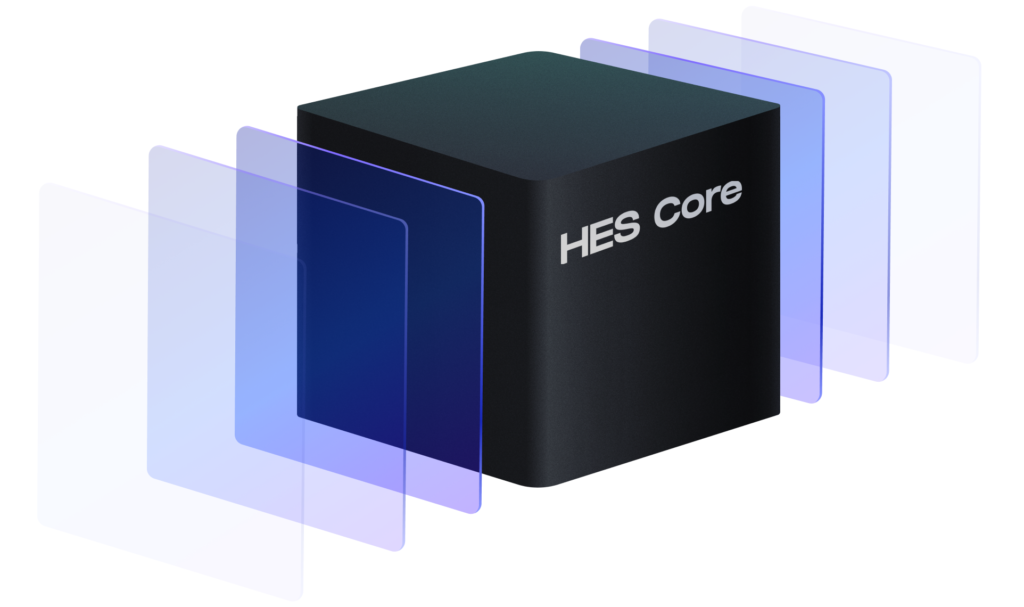
OOTB and custom are still not an option for your lending business? There is a third one! By configuring and adapting prebuilt components, such as the ones in HES Core, you can deliver your business all the customization of custom software while having a solid base to operate from.
HES Core: Digital Lending Engine Behind HES Software HES Core consists of 20+ prebuild modules that can be configured to suit your specific business needs. Among 100+ possible integrations, the Core offers the following modules:
- Customer onboarding
- Calculation and product engine
- CRM
- Payment and money transfer
- Notification center
- Security
- Document management
- BPMN, etc
What are the benefits of configured software by HES?
Cost-effectiveness. Unlike 100% custom software, configuring an existing solution to suit your business needs is more cost-effective. You’re not developing from scratch, merely adjusting the software to meet your needs, reducing cost, and retaining flexibility.
Fast launch. Custom software takes a long time to develop. First, you need to create the software, test it, fix it, and then, maybe, it’ll be ready (or ready for another round). Configured Software allows you to get a customized solution with a to-market time as short as 3-4 months.
Generations Online Banking: How to Adapt Lending for Boomers, Millennials & Gen Z Scalability. Whether you need a unique customer onboarding solution, a credit scoring module, or in-depth security processes, configured loan origination software allows you to adapt your tech to suit your needs. Choose, chop, and change modules for your business without adding in any extra fat.
Psss… Wanna try HES Core in action?
How to Decide: LoanBox vs HES Core
As we said initially, choosing the right methodology for your business software is one of the biggest challenges you’ll face. That’s why, before you decide, ask yourself the following questions:
How big is your business? — SMEs and large enterprises will always have different goals and perspectives, don’t compare yourself to others, focus only on your company.
What is your growth strategy? — Do you have big plans for the near future, or are those expansion goals way off? This will affect your decision. The solutions by HES FinTech imply no additional charges for growth.
Does your business have unique needs? — Can you make do with out-of-the-box, or do you need some specific features to make your business work?
Anyway, the HES team can guide you through two of our SaaS lending software solutions and help you choose the best one for you. Contact us for details or book a demo.














